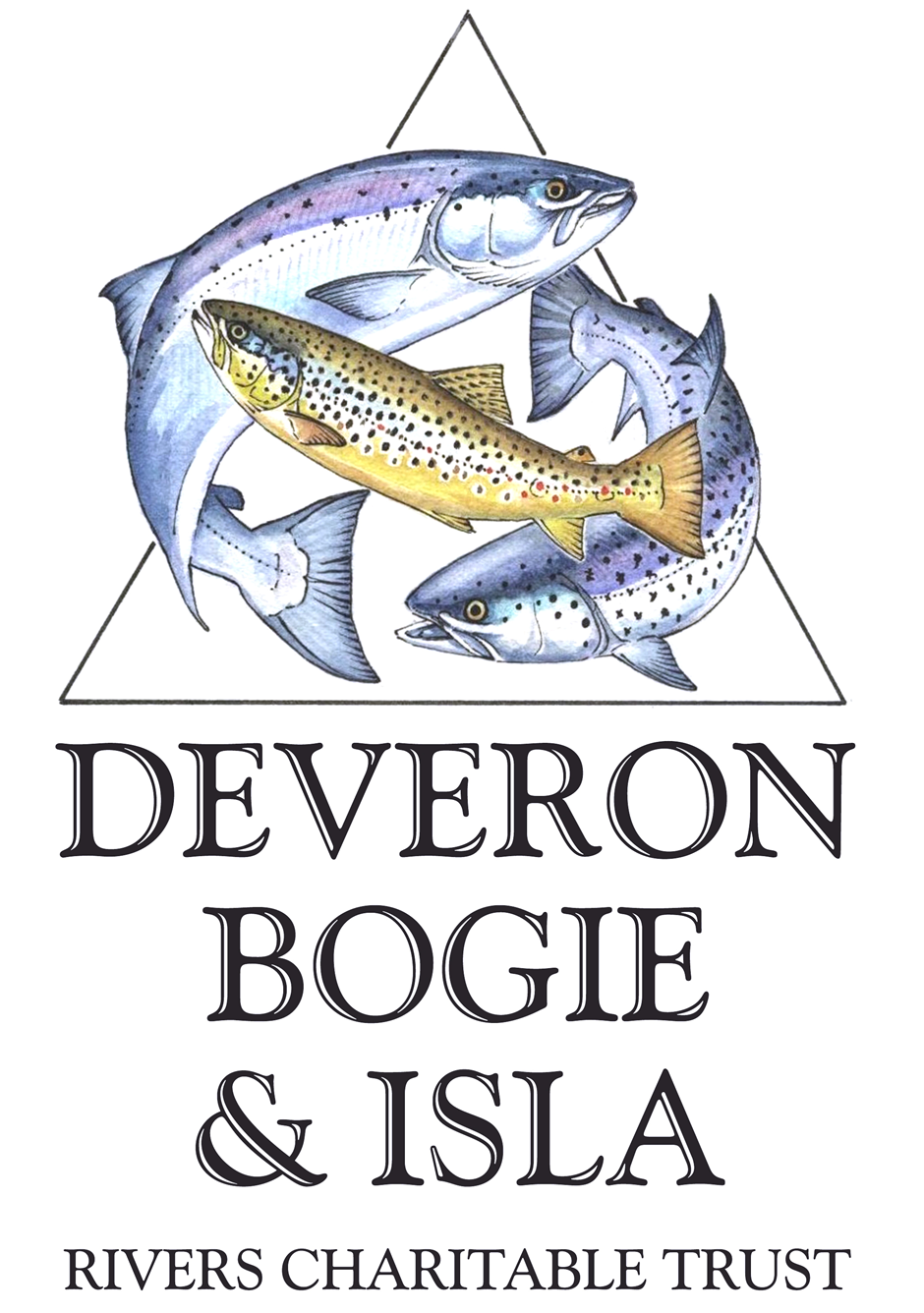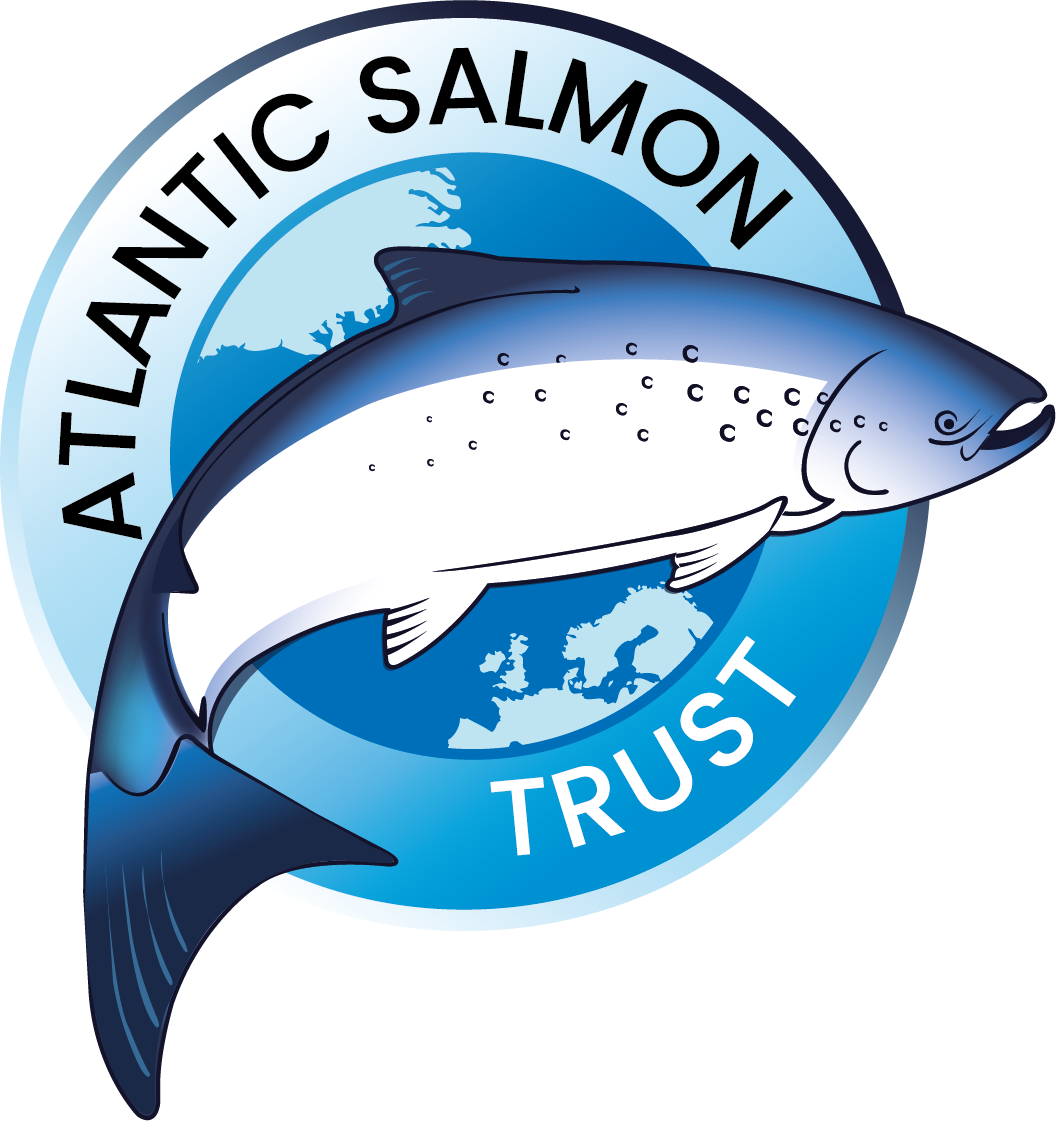Project Deveron achieves first ever returning adult salmon count for the River Deveron.
Since 2016 the Deveron, Bogie and Isla Rivers Charitable Trust, supported by the Deveron District Salmon Fishery Board, has been trialling different sites and technologies to scientifically establish a complete river count for returning adult wild Atlantic salmon. This ambition was realised in 2023 with the launch of Project Deveron, a partnership between the Atlantic Salmon Trust and the Deveron, Bogie and Isla Rivers Charitable Trust, supported by the Marine Directorate. The 10-year project aims to achieve large-scale restoration of salmon and their wider environment through a work programme of catchment-scale habitat restoration combined with cutting-edge salmon population and wider environmental monitoring. Its aim is to demonstrate the success of restoration efforts over time upon the wild salmon population and wider biodiversity in the catchment.
As part of its monitoring programme, an ARIS (Adaptive Resolution Imaging Sonar) sonar imaging fish counter was deployed in the river Deveron on the Montcoffer beat towards the lower end of the river in 2023, with weather and river conditions enabling it to operate from 24th February to 19th October. This state-of-the-art counter uses sonar technology to generate video footage of passing fish, enabling the team to build a picture of the total run size of returning wild Atlantic salmon and has started to create a baseline on which to assess how the population responds to restoration efforts over the long term. Unlike conventional video camera counters, sonar counters will also work in coloured and cloudy water too, as well as in the dark.
The video footage generated by the ARIS sonar counter is continuously recorded and must undergo subsequent analysis to identify and count fish. This is conducted manually using specialist software allowing the footage to be reviewed and saved.
Differentiating between trout and salmon is an important task, and fortunately the ARIS sonar counter provides the team with the high-resolution imaging necessary to take a measurement of each individual fish which has passed by.
Initially the team has proceeded on the basis of fish over 55cm being regarded as salmon. This measurement is based on scale readings taken from angler-caught fish and, while this measurement might exclude the smallest salmon and include some larger brown trout and sea trout, the team is working on developing a model that will better estimate the degree of overlap between the length of salmon and trout.
Between 24th February and 19th October 2023 5,775 fish (>55cm length) were counted moving upstream and 1,101 fish (>55cm length) were counted moving downstream, equating to a net count of 4,674 salmon migrating upstream past the ARIS counter. This should be considered a minimum count as some fish will have been missed during the 25 days when there was no footage due to floods and power supply issues and the 3 partial days when the image was obscured.
To compensate for these inoperable periods, a model has been developed to estimate the number of salmon that would have been expected to have been counted on those days when the counter was offline or was only partially effective. This increased the total estimated count to 5,600 returning adult salmon, with a range of 5,464 -5,753. Using this total run estimate, the 2023 rod catch of 766 salmon on the Deveron would equate to a rod catch rate of 14%.
The Project Deveron partnership is delighted with this early success in the programme, made possible by a great deal of hard work and collaboration by the teams involved, both out in the field and through desk-based data analysis. The ARIS counter deployment in 2023 has produced footage that has allowed the first ever accurately recorded returning adult salmon count for the River Deveron to be achieved, providing a key baseline against which the restoration programme can measure its impact and success over time. Other monitoring methods include PIT (passive integrated transponder) tagging of juvenile salmon to understand changing marine survival rates, as well as wider environmental monitoring and we will provide updates on these in the future.
As we look ahead, the team is confident that the technical issues have been rectified for the 2024 season, where the counter has been operating continually since 5th March, following improvements made to the power supply, support structure to better withstand floods, and an upgraded internet connection. We look forward to providing the 2024 returning adult count next year.

View downstream with the ARIS deployment frame on the right bank immediately upstream of historic croy.

The ARIS 1800 suspended from the temporary scaffolding frame with the AR2 rotator arm that allows remote adjustment of camera both vertically and horizontally.


